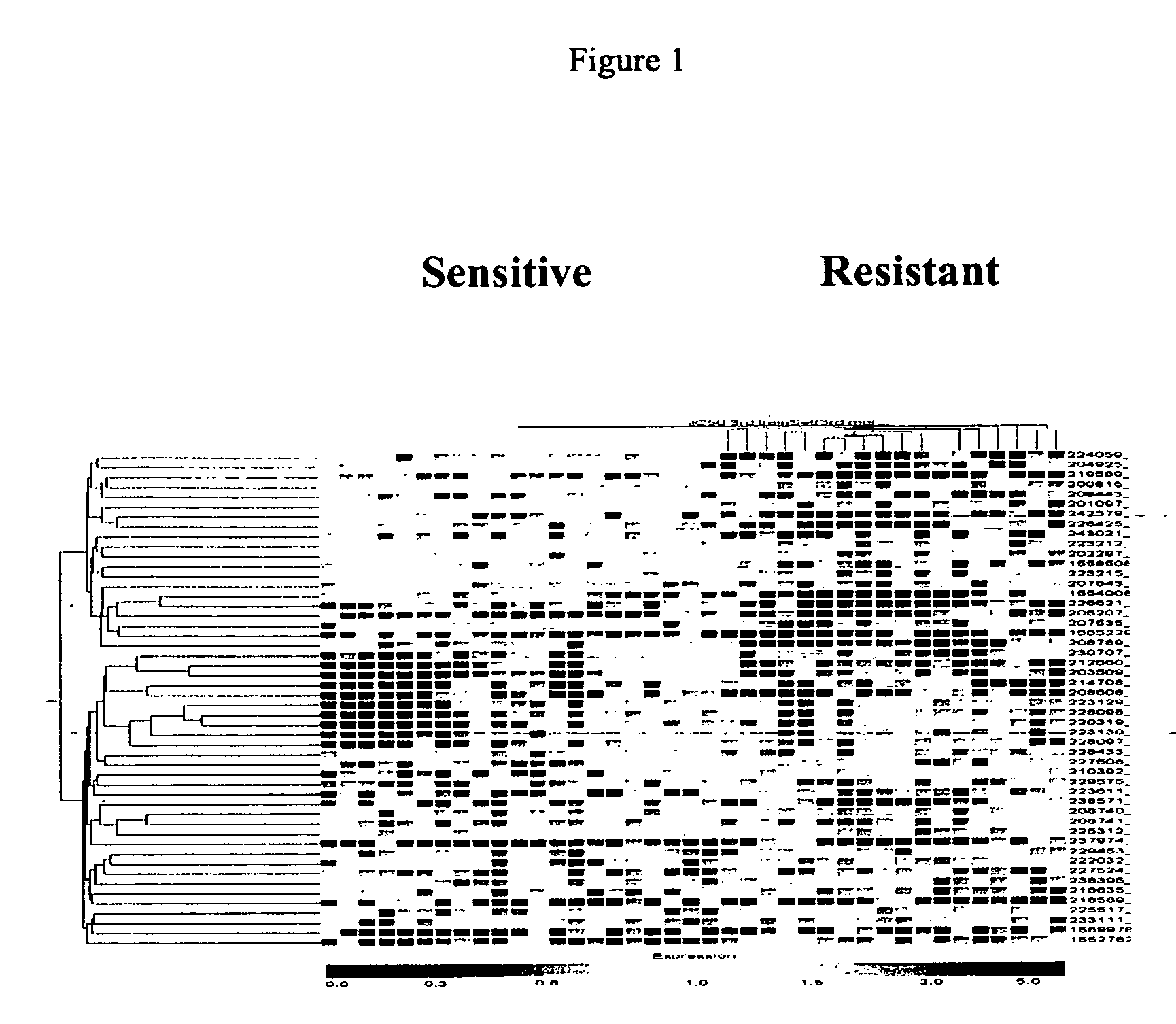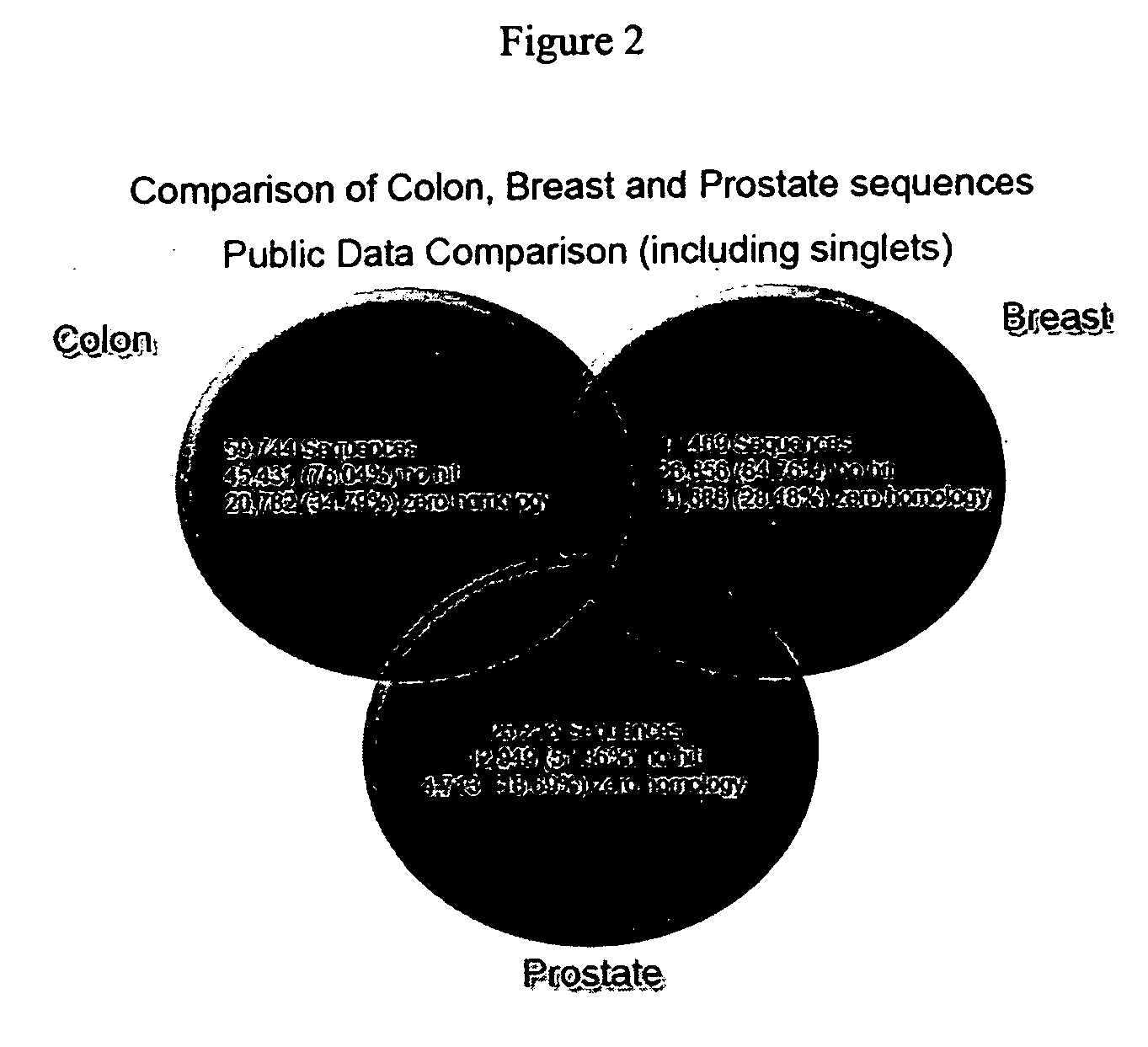Transcriptome microarray technology and methods of using the same
- Summary
- Abstract
- Description
- Claims
- Application Information
AI Technical Summary
Benefits of technology
Problems solved by technology
Method used
Image
Examples
example 1
Preliminary Listing of Colorectal Cancer Transcriptome Sequences
[0202] The following methods were employed to derive the preliminary colorectal cancer transcriptome array sequences disclosed in European patent applications EP 04105479.2, EP 04105482.6, EP 04105483.4, EP 04105484.2, EP 04105507.0, and EP 04105485.9 and U.S. provisional patent application 60 / 662,276 and 60 / 700,293.
Materials and Methods
Filtering of Public Data
[0203] All the public expressed sequence tags (ESTs) from all the downloaded libraries were retrieved in FASTA format and all 921 libraries were concatenated into a single sequence file containing 272,686 single ESTs. These ESTs were then filtered using a specific combination of filters within Paracel Filtering Package (PFP) (available at the website www.paracel.com) to ensure that undesired sequence elements did not enter the assembly process. Settings were selected to mask low-complexity regions, vector sequences and repeat sequences. Sequences containing ...
example 2
Further Identification of Colorectal Cancer Sequences
[0208] Additional colorectal sequence information was derived by the identification of other transcripts expressed in colorectal tissue through detection on a microarray containing publicly available information. These sequences compliment the preliminary transcriptome array sequence information to provide a more complete array representing the transcriptome for colorectal cancer.
Method
[0209] RNA from 40 colorectal tissues (27 tumor and 13 normal) was labeled and hybridized onto the microarray containing publicly available information. From these arrays a list of transcripts was derived for those targets which were called present and above background in at least one of the arrays (i.e. identifying transcripts expressed in at least one of the colorectal samples).
[0210] Initial work using the GI or accession numbers associated with the probe sets on the chip showed some discrepancies between the target sequence and the full seq...
example 3
Antisense Sequences from the Colorectal Cancer Transcriptome
[0216] With the increasing interest in the scientific community in the role of endogenous antisense RNA transcripts, the colorectal cancer database was examined for the presence of antisense transcripts.
Method
[0217] Subsequent to assembly, both the in-house and public data contigs were BLASTed against the Genbank NT database for annotation purposes and to identify the orientation of the sequence. In the cases where the contigs were identified as being in the reverse orientation compared to that listed in Genbank, the sequence was reverse complimented and both orientations were included in the final data set. Therefore, antisense and corresponding sense transcripts were combined to form a gene list of 5,672 transcripts (Gene List H).
PUM
| Property | Measurement | Unit |
|---|---|---|
| Fraction | aaaaa | aaaaa |
| Digital information | aaaaa | aaaaa |
| Digital information | aaaaa | aaaaa |
Abstract
Description
Claims
Application Information
 Login to View More
Login to View More - R&D
- Intellectual Property
- Life Sciences
- Materials
- Tech Scout
- Unparalleled Data Quality
- Higher Quality Content
- 60% Fewer Hallucinations
Browse by: Latest US Patents, China's latest patents, Technical Efficacy Thesaurus, Application Domain, Technology Topic, Popular Technical Reports.
© 2025 PatSnap. All rights reserved.Legal|Privacy policy|Modern Slavery Act Transparency Statement|Sitemap|About US| Contact US: help@patsnap.com


